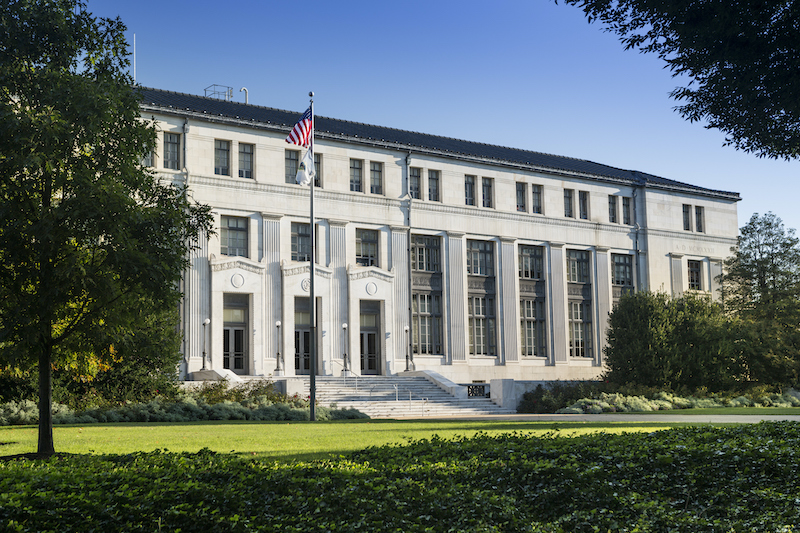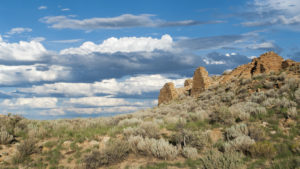
Federal public lands agencies should prioritize the inclusion and fair treatment of all employees.
A citizen of the Laguna Pueblo, Deb Haaland is the first Native American woman to serve as Secretary of the U.S. Department of the Interior.
Haaland will oversee the federal agencies that manage nearly 480 million acres of federal public lands, while the head of the U.S. Forest Service in the U.S. Department of Agriculture (USDA) manages the remaining 190 million acres.
Haaland and her colleague, Secretary of Agriculture Tom Vilsack, have a tall double-order ahead. In his flurry of first-day executive orders, President Joe Biden announced the entwined goals of addressing racial, economic, and other forms of injustice, as well as tackling the country’s most serious environmental challenges. Reflecting these goals, during his confirmation hearing, Vilsack pledged to address “discrimination in all its forms across USDA agencies,” and “to root out generations of systemic racism that disproportionately affects Black, Indigenous, and People of Color.”
Haaland’s biography itself reflects the promise of President Biden’s goals. She was born in Winslow, Arizona to a Laguna Pueblo mother and a white father. After graduating from college, Haaland scraped by, working to support her young daughter and intermittently receiving food stamps. She went to law school and then became involved in politics. In 2018, Haaland and Representative Sharice Davids (D-Kan.) were the first Native American women elected to the U.S. Congress.
In the U.S. House of Representatives, Haaland championed public lands protection that served the goals of equity and justice—including her legislative proposal to protect Bears Ears, the first-ever national monument put forward by Native American Tribes. As she said at her confirmation hearings: “If an indigenous woman from humble beginnings can be confirmed as Secretary of the Interior, our country holds promise for everyone.”
With Haaland’s historic appointment, the U.S. government has a distinctive opportunity to do more than ever before to redress the longstanding injustices that Native people have endured in the United States. At the same time, Haaland and Vilsack must also address the problems and power imbalances within their own organizations—internal injustices that affect both Native and non-Native people who work for the federal government.
By taking steps to ensure that all departmental employees are treated with respect and dignity, Haaland and Vilsack can model the practices that the federal government must embrace to ensure that Native peoples and communities are treated with respect and dignity, too.
To achieve their equity and justice goals, Haaland and Vilsack would do well to start by cleaning their own houses.
Federal public lands agencies have sordid histories of racial and gender discrimination that persisted well into the twenty-first century and have never been fully addressed. If Haaland and Vilsack can root out discrimination in their own agencies, there is hope for their ambitious external justice, environment, and climate agendas—and for improving relations with Native American Tribes.
The Biden Administration appears to be off to a strong start. At the Interior Department, the leadership team has a greater percentage of women and people of color than in previous administrations. In particular, the number of Indigenous appointees appears higher than ever—for example, in the Interior Department’s Office of the Solicitor, four top officials are Tribal citizens.
Still, Haaland and Vilsack have their work cut out for them. Aside from the political appointments, the federal workforce is predominately and disproportionately white and male. More important than numbers, however, is the deeply rooted culture of racial and gender exclusion and discrimination in pockets of public lands agencies.
In 2014, pervasive sexual harassment and discrimination within the National Park Service became front-page news when thirteen women—employees or former employees at Grand Canyon National Park—signed a letter exposing the harassment.
The women wrote directly to former Secretary of the Interior Sally Jewell out of frustration that their complaints had been sidelined, or worse, that supervisors had retaliated against them for taking action.
For two women, retaliation took the form of male perpetrators filing baseless harassment complaints against them. The employees’ letter prompted an investigation by the Interior Department’s Office of the Inspector General, which issued a report in 2016 finding “evidence of a long-term pattern of sexual harassment and hostile work environment” in the Park Service’s Grand Canyon River District.
The Inspector General documented systemic failures and menacing behavior by supervisors and employees, including verbal abuse, sexual assault, and retaliatory actions, such as denying women food and refusing to take them to their worksites. Multiple women reported that their supervisors failed to report their complaints to human resources and the Equal Employment Opportunity Commission.
A brief flurry of activity followed the Inspector General’s report. The Interior Department commissioned a survey, which showed that employees throughout the National Park Service experienced high rates of sexual harassment and discrimination. At congressional hearings, politicians excoriated the National Park Service. Former Trump Administration Secretary of the Interior Ryan Zinke reportedly stated—without irony—that a “culture of tolerance of harassment and discrimination is unacceptable for me, and for the President, and we will take action.”
And then … seemingly nothing changed.
For example, Christine Lenhertz, the first woman appointed Superintendent of Grand Canyon National Park, was forced out within a year by male employees who complained they had been subject to sexual harassment. Lenhertz was cleared of all allegations, but she resigned and left the National Park Service anyway. During the remainder of the Trump Administration, action to redress decades of discrimination dwindled to nothing.
The Forest Service’s track record is arguably worse. Secretary Vilsack inherits once again an agency with a 40-year history of legally documented discrimination. Since the 1970s, employees have brought various class action cases against the Forest Service, alleging pervasive sexual harassment, discrimination, and retaliation. Most recently, during Vilsack’s previous stint as Secretary of Agriculture in 2014, a Native American woman who endured years of verbal abuse, insubordination, and retaliation filed suit.
One reason for the intractable discriminatory culture was that the Office of the Assistant Secretary for Civil Rights within USDA, which reviews complaints brought by employees, was itself the subject of multiple harassment complaints. At a congressional hearing in December 2016, the late Representative Elijah Cummings (D-Md.) lamented the sorry state of affairs: “Forty years of harassment, 40 years of pain, 40 years of lost opportunity. It’s long past time for the Forest Service to finally break its toxic cycle of sue, settle, and backslide.”
And yet, backslide it did. In 2018, Forest Service Chief Tony Tooke resigned amid charges of sexual harassment. Predictably, yet another wave of mea culpas followed, as Tooke’s replacement, Vicki Christiansen, promised real change. For women of the Forest Service, however, the time for promises has long passed.
Under the Biden Administration, public lands agencies should finally move from ineffectual no-tolerance harassment policies to an affirmative culture of inclusion and anti-subordination.
Women of all races who work in the public lands agencies do so because they want to protect the United States’ land, air, and water, and because they deeply value their commitment to public service. I have interviewed a number of these women for an ongoing research project, and throughout these interviews, I have heard a recurring refrain of complex feelings of loss. The women hate what happened to them, but they wish they could have kept working for people and places they love. The stories of Native women are particularly poignant, because their individual treatment mirrors the historic trauma suffered by their people collectively.
What will it take to turn public lands agencies from places where women are demeaned, bullied, and abandoned into ones where they are in-control and fully valued?
It seems clear that “zero tolerance” harassment policies that purport to put strict controls in place are not enough. These policies have been used by perpetrators as yet another means to retaliate against those who speak out. To be sure, there must be robust complaint protocols and accountability mechanisms. But without a radical change in culture from the top down, the “toxic cycle of sue, settle, and backslide” will recur.
Secretaries Haaland and Vilsack can initiate that change by making it clear to every person with managerial responsibility within their agencies that the values of tolerance, respect, and support for gender and racial equality and inclusion must be the guiding forces in their workplaces. Haaland and Vilsack should cultivate and reward those values through leadership and personnel decisions, and by maintaining a hands-on approach throughout their tenures. They should also ensure that the newly proposed Civilian Climate Corps becomes a model for recruiting diverse workers and training them for careers in public lands agencies.
If Haaland and Vilsack want to be truly visionary, they should also invite back the many women whose careers have been sidelined. One of the women I interviewed dreamed of reclaiming the Grand Canyon by rafting the very stretches where the most egregious incidents of harassment occurred. Another, a Native American woman, grew emotional imagining a similar trip for her relatives and elders.
Imagine such trips throughout our public lands, purging the toxic cycles of abuse and forging spaces of inclusion, reconciliation, and justice. Then, and maybe only then, will our public lands agencies truly serve the entire public—and also deliver on meaningful, long overdue promises of justice for Native Americans.
This essay is part of a series entitled Native Peoples, Tribal Sovereignty, and Regulation.




